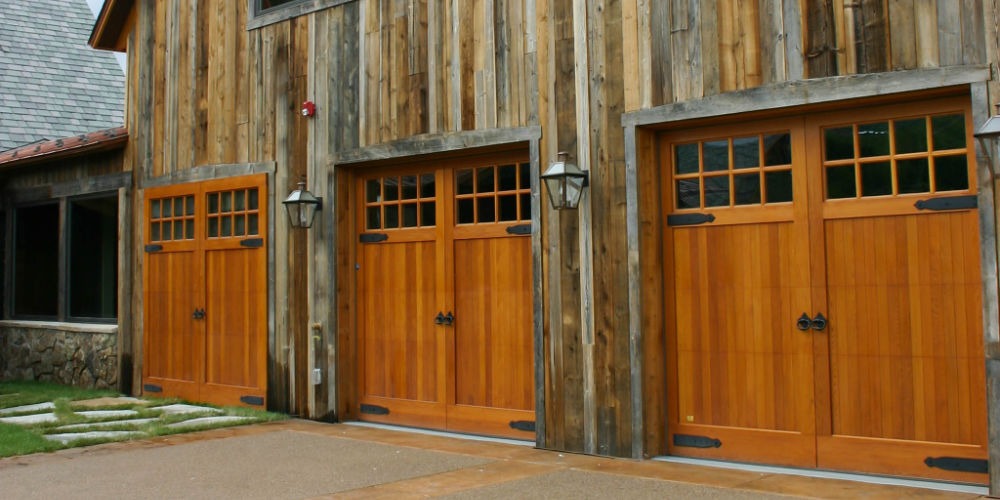
How to Prevent Rot on Garage and Entry Doors
Like any exterior feature on your home, your garage and entry doors are susceptible to various forms of deterioration, including rot and water damage. Whether it’s due to excessive moisture or the passage of time, rot can compromise a garage door’s structural integrity and aesthetic appeal, deteriorating its total lifespan. That’s why it’s vital to maintain your doors to preserve their functionality, natural beauty, and durability.
How can you prevent rot on garage and entry doors? Follow these six tips.
1. Invest in a High-Quality Custom Door
You get what you pay for, so why not invest in the best doors on the market? The sturdy construction and durable finishes of CAMBEK custom garage doors and entry doors provide long-lasting protection against the elements. Our doors are meticulously crafted with attention to detail, using superior materials that are resistant to moisture and decay (read more about our Douglas Fir frames and Western Red Cedar materials).
By opting for a custom door, you can also ensure a precise fit, minimizing gaps that could allow water intrusion. We employ advanced woodworking techniques that have been passed down for generations, including proper sealing and treatments that enhance the door’s resistance to moisture damage and rot.
Investing in a high-quality garage door constructed from durable materials, such as Western Red Cedar, can help prevent rot. Western Red Cedar possesses natural properties that make it resistant to rot, decay, and insect damage. Opting for this superior wood can mitigate the risk of moisture intrusion and fungal growth.
2. Use the Right Type of Finish on the Door
Selecting a high-quality exterior finish specifically designed for wood protection creates a durable barrier that shields the door from moisture, UV rays, and fungal growth. Water-resistant finishes like varnishes, polyurethanes, or exterior paints effectively seal the wood, preventing water infiltration and subsequent rot. It is also crucial to ensure that all surfaces, including edges and joints, are properly coated. Learn more about the special finishes we apply to our doors.
3. Keep the Door Well Maintained
Regular cleaning using a mild soap and water solution helps remove dirt, grime, and potential sources of moisture that can accelerate rot. Additionally, applying a fresh coat of wood finish every few years acts as a protective barrier against moisture and fungi. This preservative not only nourishes the wood but also enhances its resistance to rot-causing elements. Finally, it’s important to address any cracks, peeling paint, or damaged sealant promptly to prevent water infiltration.
4. Properly Ventilate the Garage
Adequate airflow helps regulate humidity levels, reducing the chances of condensation and fungal growth. Installing vents or windows in the garage space allows fresh air circulation, promoting drying and preventing stagnant, moisture-laden air. If the garage or entryway is not used regularly or serves as a storage area, periodically opening the garage door allows for ventilation and airflow, minimizing the risk of excessive humidity.
5. Install Gutters and Downspouts
By redirecting water away from the doors, gutters and downspouts play a vital role in preserving the integrity of the wood. It starts with the gutters that collect rainwater from the roof, channeling it away from the doors and the surrounding areas. It then continues to downspouts which direct the water flow to a safe distance from the door, preventing excessive moisture exposure. This effective system helps to minimize water infiltration and potential damage caused by prolonged contact with moisture.
6. Inspect the Door Regularly
While it might seem like an over-the-top measure, regularly inspecting the wood is crucial in preventing rot on wood garage and entry doors. These visual inspections allow you to identify early signs of damage, decay, or moisture intrusion. Look for any discoloration, soft spots, or areas where the paint or finish is peeling. Don’t forget to inspect the door’s edges, corners, and joints, as these areas are more prone to moisture infiltration. Through vigilance and proactiveness, you can identify and resolve potential problems before they escalate into extensive rot damage.








